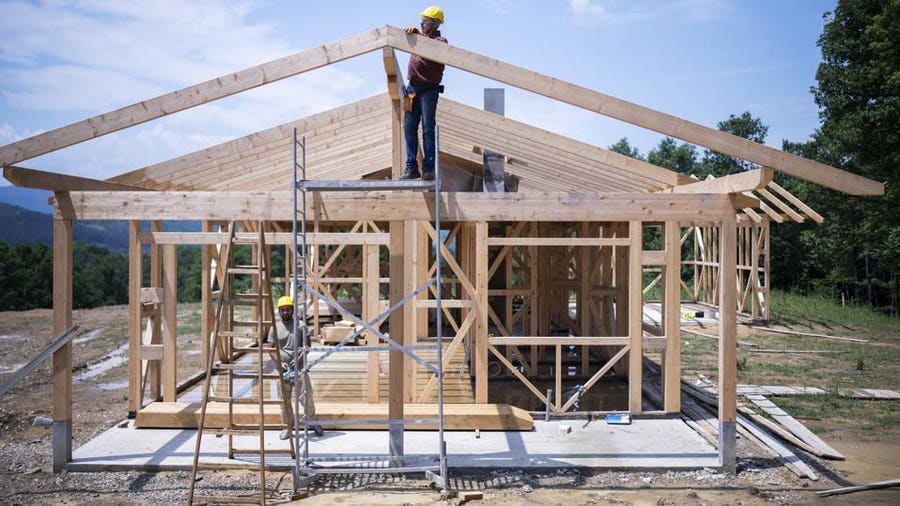Stucco remediation is the process of thoroughly examining a stucco wall system to find underlying issues and then fixing them. Remediation is much more in-depth than repair and requires more skilled workers to perform. Contact Stucco Remediation Specialists Philadelphia for professional help.

Mold, mildew and rotted house insulation not only damage a home’s value but also put the health of its occupants at risk. It’s time to remediate.
Stucco is a popular choice for homes because it looks beautiful and offers great energy savings. However, it can be difficult to keep your stucco in good condition if you don’t catch problems early. If you have a problem with your stucco, you should always call a professional for repair or remediation. The longer you wait, the worse the problem will get and the more expensive it will be to fix.
Some of the signs that you may need to have your stucco repaired include:
Moisture Damage:
If you see water stains or discoloration on your stucco, it’s time to contact a remediation specialist. These stains are often caused by moisture intrusion and can be very costly to repair. The stains can also cause mold and mildew to grow inside your home, which is unhealthy for you and your family.
Cracks:
If your stucco is cracked, it’s important to have it repaired right away. This will not only help you avoid further damage to your home, but it will also save you money in the long run. This is because repairs are typically much cheaper than replacing your entire stucco structure.
Black Stains:
If there are black stains on your stucco, it’s a sign that you have significant water damage behind the stucco. This is because water will weep through the material and leave black stains on the surface. These stains can be very expensive to remove and replace, and can even require removing an entire section of your stucco.
Woodpecker Holes
If you have a lot of holes in your stucco, it’s time for a repair or remediation. These holes are caused by woodpeckers, which like to peck at triple-coated cement stucco for the taste and sound it produces. This can result in serious structural issues if not addressed quickly.
The cost of a stucco repair or remediation project can vary significantly depending on the amount of work that needs to be done and whether there are any hidden damages. Most jobs will begin with a thorough inspection to find any underlying issues. Then, the contractor will determine a course of action and provide you with a quote.
Timely Service
Stucco, despite its many benefits like durability and energy efficiency, isn’t immune to damage. The material is susceptible to cracks and other flaws, especially in areas with fluctuating weather conditions. It’s essential to recognize signs of damage and take prompt action. Otherwise, the damage may worsen and cause more costly repairs in the future.
Stucco repair typically refers to the fixing of surface-level damage, which usually involves hairline cracks and small holes caused by impact or structural settling. Stucco remediation, on the other hand, goes much further to deal with serious problems beneath the surface that can’t be addressed with repairs alone. Some examples of situations that require stucco remediation include extensive moisture penetration or widespread mold growth.
A professional inspection can help determine which repair option is best for your property. The team will assess the extent of the damage and identify the underlying causes of it. Then, the professionals will repair the stucco as needed to restore its original condition. They will also clean up the work area and remove any debris or excess materials.
Once the repair work is complete, it will be cured and dried before painting to ensure that the results are durable. Then, they will apply a waterproof seal to further protect the stucco from moisture infiltration and other weather elements.
When the project is finished, the team will conduct a final inspection to make sure that the repaired stucco meets quality standards and blends seamlessly with the existing structure. Then, they will clean up the work area and remove any remaining materials.
Professional stucco repair services have a wealth of knowledge, expertise, and resources that enable them to assess damage accurately, determine suitable repair methods, and execute repairs efficiently. This saves you time and money while achieving durable results that last longer than traditional repair methods. Furthermore, stucco repair experts understand the complex nature of this material, so they can provide a solution that’s tailored to your unique needs. They can even provide a guarantee for their work, so you can be confident that they will do what they say they will do.
Guaranteed Results
Stucco is an attractive, durable material that offers many benefits to homeowners. However, it is important to understand that stucco requires regular maintenance and repair to prevent damage. This will keep your home looking beautiful, and help it to retain its value.
It is also important to be able to recognize the difference between repair and remediation. Repair is typically used for surface level problems, while remediation is a heavier duty service that deals with the underlying cause of the problem. This is especially true in cases where water leaks and other issues cause the drywall to become damaged, which can lead to mold and structural damage inside the home.
When you choose a professional, dependable stucco contractor, you can rest assured that your home will be in good hands. They will perform a thorough inspection to determine the extent of the problem, then work to address the issue quickly and effectively. In addition to repairing the stucco, they will also provide you with a plan to prevent moisture intrusion in the future.
The process of repairing or replacing stucco is not a quick one, but it will be well worth the investment in the long run. It will protect your home from further moisture intrusion and rot, which could be expensive to fix later on. It will also increase the value of your home and make it more attractive to potential buyers.
Many people believe that they can handle stucco repairs on their own. While some minor repairs can be done by a homeowner, extensive repairs or remediation should always be left to professionals. This is because these services often involve dealing with underlying structural problems and can be extremely complicated for the untrained eye.
In order to perform a full remediation, your stucco will need to be stripped down to the base layer. Once this is done, the underlying damage can be repaired, and the stucco will be re-applied properly. This will ensure that your stucco will remain in excellent condition for the duration of its life, up to 50 years.
Customer Satisfaction
Stucco is a beautiful material that enhances the curb appeal of your home while also providing weatherproofing and protecting the structure beneath. However, if your stucco is showing signs of damage such as cracking, discoloration and a musty smell inside the walls it may be time for full remediation. This service is a more significant undertaking than simple repairs, but it can protect your home from structural damage and prevent mold.
While repair and replacement are the two main options for stucco, repair is the preferred option if the problem is isolated to a small area of your house and it’s caused by something that can be easily fixed, such as an outside force breaking the stucco or moisture that penetrates deeply into the exterior wall. Remediation involves removing the existing stucco and fixing any internal issues that can’t be treated with repairs, but it is a more expensive option than repair.
If your stucco is looking worn and damaged it can affect your home’s value. If you’re planning to sell your property in the future, a fresh coat of paint and a few repair patches can restore its appearance and boost your curb appeal. However, if you’re dealing with widespread damage it may be time for full remediation to avoid costly structural damage.
Stucco Remediation Specialists can help you choose the best option for your property based on the severity of the damage and your budget. Remediation is more expensive than repair, but it’s a wise long-term investment that can save you money in the long run.
Stucco is a complex material, so it’s important to hire a professional with years of industry experience to work on your project. While DIYers can tackle other projects around the house, stucco restoration requires an intimate understanding of how the material works and how to spot problems before they get out of hand. An inexperienced team can quickly ruin your home with shoddy work that will only cost you more money in the long run.



